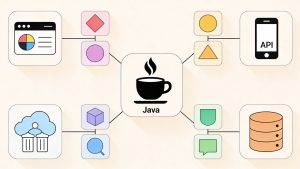React’s 19.2 update refines the framework’s architecture, prioritizing more predictable rendering and improved server-side streaming. One standout feature is the <Activity /> component, which empowers developers to pause updates for hidden UI segments—think tabs or modals—while retaining component state for efficient preloading and user experience.
The introduction of the useEffectEvent hook addresses one of React’s persistent pain points: event handler dependency management. By decoupling event logic from effect dependencies, this hook reduces unnecessary re-renders and streamlines complex event-driven code.
Performance enhancements continue with partial pre-rendering—static sections load first, followed by dynamic hydration—and upgraded streaming SSR, making Suspense handling smoother and aligning rendered output across server and client. The update to React DevTools brings visual performance tracing, helping teams pinpoint and optimize every phase of their app’s rendering lifecycle.
For projects dependent on server components, the new cacheSignal API enhances control over cache lifecycles, allowing proactive cleanup and cancellation of unused data.
TanStack DB: Lightning-Fast, Reactive Frontend Databases
TanStack DB, a recent arrival to the TanStack toolset, enables sub-millisecond, reactive data queries within the browser. It’s designed to work in tandem with TanStack Query—allowing developers to build normalized, transactional client-side collections without rewriting backend logic.
Its highlights include:
- Typed collections built from
useQuerycalls (REST, GraphQL, etc.) - Live SQL-like queries that automatically update UI as data changes, including cross-collection joins
- Boilerplate-free, optimistic transactional mutations for fast, rollback-ready updates
TanStack DB’s architecture is based on a TypeScript-optimized version of differential dataflow, providing real-time responsiveness regardless of dataset size. With native support for engines like ElectricSQL and Trailblaze, TanStack DB makes local-first, collaborative UIs extremely efficient—offering advanced performance once limited to elite apps.
Agentic AI and the Need for Scalable Data Strategies
Enterprise adoption of agentic AI remains in the early stages, with only a fraction of available corporate data fueling next-generation AI systems. Industry experts recommend moving beyond legacy “swim lane” data infrastructures—where structured, unstructured, and time-series data are siloed separately. Instead, organizations should invest in unified, high-reliability systems that can accommodate AI’s demands for low-latency analytical and transactional access, preparing for a future where AI moves from automating the easy to enabling the previously impossible.
Shopify: A Landmark Migration to React Native’s New Runtime
Shopify recently migrated its flagship mobile products, Shopify Mobile and Shopify POS, to the new React Native architecture, marking one of the most extensive real-world transitions to date. Adopting a minimal-change rollout, Shopify enabled the new runtime with the fewest required updates and ran legacy and modern architectures side-by-side for validation.
Key takeaways from their journey:
- Prioritized native module migration and deferred less critical components
- Relied on tight feature flagging and staged versioning for safe transitions
- Demonstrated ongoing feature velocity and crash-free sessions throughout migration
This approach proves that major architectural upgrades can coexist with regular development cycles, provided there is disciplined planning and technical leadership. Native expertise remains vital for wringing out peak mobile performance.
Bun Install: A New Benchmark for Dev Tool Performance
Bun’s install command sets a new standard for dependency management speed, regularly completing tasks in under a second. Unlike traditional Node.js-based installers, Bun’s approach sidesteps JavaScript runtimes in favor of direct system calls and aggressive parallelization—minimizing memory usage and maximizing CPU core utilization.
For developers, this means CI/CD pipelines run faster, containers spin up almost instantly, and everyday development becomes more responsive—especially in large monorepo contexts. While the Bun ecosystem is still evolving, its install tool is already redefining expectations for toolchain speed and developer productivity.
ImageJS 1.0: Type-Safe, Powerful Image Processing for JavaScript
ImageJS’s 1.0 release marks a milestone for browser and Node.js applications needing advanced image analysis. Developers now benefit from:
- Comprehensive TypeScript definitions for the entire API
- Enhanced point-based coordinate and dimension handling
- Simplified binary mask/ROI manipulation
- Advanced morphological tools to streamline edge detection and segmentation
ImageJS is fast becoming a top choice for media-heavy platforms, offering both power and safety for complex image workflows.
Chrome to Sunset the CrUX Dashboard by Late 2025
Google will deprecate the CrUX Dashboard for Chrome User Experience data by the end of November 2025, citing scalability limitations and frequent outages. Users are encouraged to migrate to CrUX Vis for more reliable, weekly data visualization or to connect directly with the CrUX BigQuery dataset for deeper analytics before the official sunset date. This change ensures ongoing access for teams relying on web performance insights.
Read more such articles from our Newsletter here.



